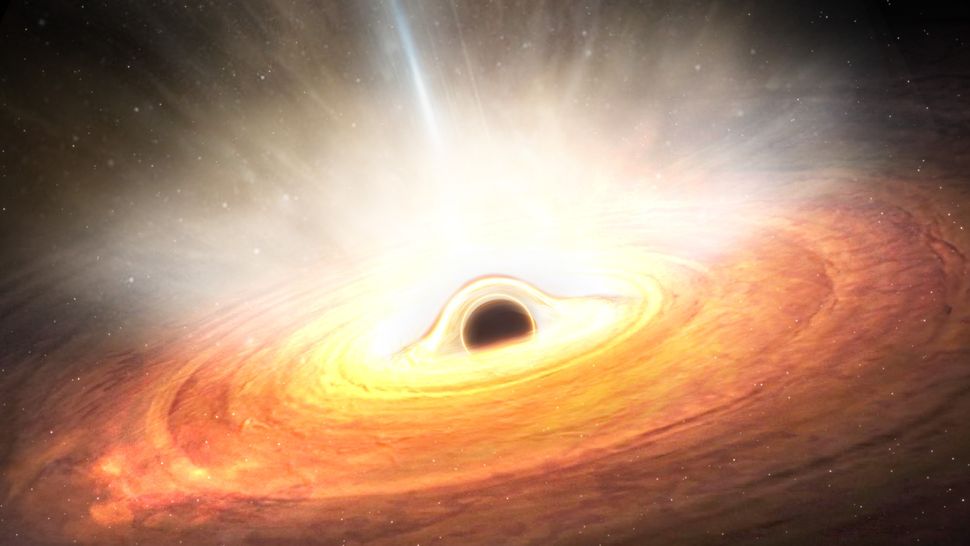Science
Related: About this forumStar-killing 'black hole wind' spotted in a distant galaxy could explain a major mystery at the Milky Way's center
By Joanna Thompson published about 2 hours ago
For the first time, scientists discovered a powerful 'black hole wind' that blew through a nearby galaxy for hundreds of days, crushing star formation and reshaping the galaxy. Something similar may already have happened in the Milky Way.

Side view of a galaxy’s active centre blasting out a strong wind of gas in all directions, shown as yellowish-white streaks.
An illustration of ultrafast wind gushing out of a supermassive black hole (Image credit: ESA)
A temperamental black hole is helping scientists learn more about how galaxies evolve. In a new study published Feb. 1 in The Astrophysical Journal Letters, researchers describe how an outburst from a distant black hole changed its galactic landscape — and how similar activity may have shaped our own galaxy.
Markarian 817 is a spiral galaxy located some 430 million light-years from Earth. Like our galaxy, the Milky Way, it has a massive black hole at its center. Such objects help hold galaxies together, exerting enough gravity on stars, dust and other material to keep everything slowly orbiting around a central point — and occasionally gobbling up some of that matter when it falls too close to the black hole's event horizon. But recently, researchers spotted Markarian 817's black hole doing something unexpected.
Rather than steadily consuming the gas and dust around it, the black hole experienced a "temper tantrum" and suddenly flung the matter away. This produced a bald patch in the galaxy in which very few new stars could form. The observation "suggests that black holes may reshape their host galaxies much more than previously thought," Elias Kammoun, an astronomer at the Roma Tre University in Italy and co-author of the study, said in a statement.
Kammoun and his team began their study with data from NASA's Swift Observatory, which detects light in the X-ray, ultraviolet and gamma-ray spectra. When the researchers noticed a significant dip in the amount of X-ray light coming from Markarian 817, they decided to take a closer look. This time, they used data from the European Space Agency's XMM-Newton mission, an extremely sensitive X-ray space observatory designed to study galaxy formation.
More:
https://www.livescience.com/space/black-holes/star-killing-black-hole-wind-spotted-in-a-distant-galaxy-could-explain-a-major-mystery-at-the-milky-ways-center
Easterncedar
(3,520 posts)And thanks. So cool.
Eko
(8,489 posts)That ours doesn't suddenly experience a "temper tantrum" although it would happen so fast we might not even know. Happy dreams everyone!
Igel
(36,082 posts)We'd have lots of warning.
Then again, it blocks star formation. We have a star. Might move the heliopause significantly, but the sun's magnetosphere should weather it well.